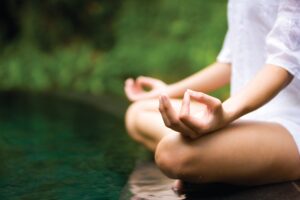We have long since moved away from thinking of meditation as part of a religion or tradition. Everyone who is interested in it learns it. With the frantic pace of our lives, many people meditate at https://www.julianalucky.com/yoga-for-kids and home to find harmony and reduce stress levels.
If you would like to join this really useful activity on your own, we offer you a few recommendations.
1. Self-discipline is the first rule. Set yourself a goal for three months: the first month – 20 minutes of meditation every day, the second – 30 minutes, the third – 40 minutes. Choose the time when you are most active and free, for example, get up early in the morning to dedicate an hour to practice in the morning.
2. Set an alarm clock so you don’t have to worry about how much time has passed. It’s important that the volume of the alarm is low and doesn’t bring you back to reality too abruptly.
3. the place for meditation should be private – we are communicating with ourselves. Don’t sit in front of the computer or in the bedroom, find a place where you have no distractions. Make sure you turn off your phone. It’s also good to meditate early in the morning because the outside noise is kept to a minimum.
Straighten our backs and sit down on the edge of a hard couch, stool, or chair. Put your hands on your knees. Don’t slouch, and don’t sag, even if this posture is not very comfortable for you – you will get used to it later. Don’t relax your body, and keep your head straight.
5. After a few days of self-study, look in the mirror and check your posture. Check the position of your head or the height of your shoulders in relation to each other. If you see asymmetry, see a doctor.
6. Relax the facial muscles, imagine your face turning into a mask. Gradually run this sensation through your whole body, first down, then up. Feel your whole body turn into the likeness of a statue.
7. Even if your leg has fallen asleep or your ear is itching unbearably – be patient and don’t move. Your subconscious will soon understand that you can’t be unpleasant, and you won’t get such signals from your body.
8. Watch for smoothness and regularity of breathing. Breathe silently and through a nose. Don’t try to make too long or too short breaths and exhalations.
9. Try to induce in yourself the sensation of quiet joy. Smile to yourself some times during meditation.
10. Thoughts are bound to pop into your head, often not the most positive ones, especially in the morning when we are preparing for the day’s work. Try to concentrate on
breathing, count your breaths to four or eight. This will help drive away unnecessary thoughts.
11. You might start to fall asleep. That’s not what we’re trying to do. Open your eyes, blink, and go back to class. Meditation is not about daydreaming and daydreaming, it’s about stopping active consciousness, and the only activity allowed is focusing on the object of meditation (the object, the point, the breath).
12 And now the alarm clock has sounded softly. Don’t hurry to open your eyes, try to evoke a feeling of gratitude to the world for meditation. When you will be overfilled with this feeling, it is possible to open eyes.
When you have mastered the above techniques, you may consider that you have stepped onto the path of meditation. But that’s a far cry from professionalism. Meditation is a lot of work on your fears, your emotions, your feelings. Step by step you will grow spiritually and see the real you. More advanced practitioners should learn under the guidance of an experienced mentor.